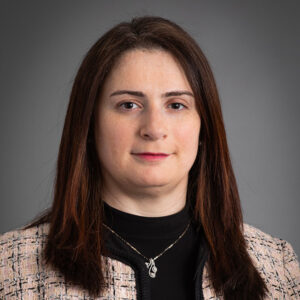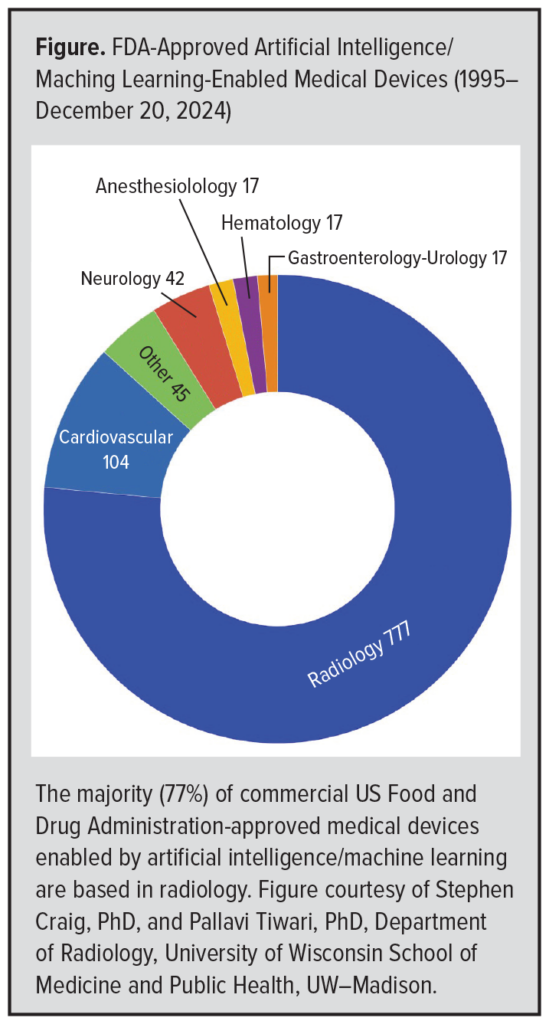
In 2024, UW Health and the UW School of Medicine Public Health launched the Center for High Value Imaging (CHVI) to improve patient access, experience and outcomes through high-value imaging. With Director Dania Daye, MD, PhD now at the helm, the University of Wisconsin Department of Radiology center will transform the way diagnostic imaging and image-guided therapies are delivered.
In the recent Wisconsin Medical Journal article, “High-Value Imaging in an Era of Uncertainty, Growth, and Disruptive Technologies,” UW Department of Radiology Chair Scott Reeder, MD, PhD and medical school Dean Robert Golden, MD mapped out the current state of imaging and how CHVI will become the model for high-value imaging innovation and care delivery.
Since its inception with the discovery of X-rays 130 years ago, the field of medical imaging has revolutionized medicine and continues to evolve rapidly. The widely cited survey of physicians by Fuchs and Sox ranked ‘MRI and CT Scanning’ as the number one medical innovation and those are just two modalities. Through imaging, patients are diagnosed, treatments are monitored, procedures are guided, and scientific hypotheses are tested.
“At UW Health, we expect to perform more than 1 million exams per year by the time we celebrate our Department of Radiology’s centennial anniversary in 2027,” Drs. Reeder and Golden noted in the article. “With such utilization comes great cost in capital equipment and in the rapidly growing workforce needed to operate equipment, interpret exams, and treat patients.”
 At the same time, the field of radiology is on the forefront of technological advancements, including the application of artificial intelligence (AI) in medicine. More than 77% of the over 1,000 US Food and Drug Administration-approved AI-related technologies are based in radiology. Much of this work is being conducted within the UW Department of Radiology. For example, Perry Pickhardt, MD uses AI tools for opportunistic screenings, whereby actionable information can be derived from previously obtained medical images to benefit patients. In addition, Pallavi Tiwari, PhD developed an AI model to identify why glioblastoma tumors are more aggressive in men than women.
At the same time, the field of radiology is on the forefront of technological advancements, including the application of artificial intelligence (AI) in medicine. More than 77% of the over 1,000 US Food and Drug Administration-approved AI-related technologies are based in radiology. Much of this work is being conducted within the UW Department of Radiology. For example, Perry Pickhardt, MD uses AI tools for opportunistic screenings, whereby actionable information can be derived from previously obtained medical images to benefit patients. In addition, Pallavi Tiwari, PhD developed an AI model to identify why glioblastoma tumors are more aggressive in men than women.
“The confluence of economic and sustainability pressures, strains on the workforce, continued success and growth of medical imaging, and emergence of advanced analytics and disruptive AI-based technologies all converge toward a new paradigm of ‘high-value imaging.’” Drs. Reeder and Golden explained in the article.
A patient-centered strategy, high-value imaging aims to improve patient access and experience as well as maximize actionable imaging-derived information. This efficiency is core to being good stewards of our human and technological resources.
Recent CHVI accomplishments include the introduction of a “Smart Suite” to improve MRI operations at the new Eastpark Medical Center in October 2024, which was spearheaded by MRI Modality Chief Ali Pirasteh, MD, Senior Vice Chair of Clinical Operations Michael Tuite, MD and Associate Vice Chair of Clinical Operations Gregory Avey, MD. Advanced analytics and innovative architectural design resulted in reduced MRI wait times and a more than 50% increase in patient throughput. In February 2025, CHVI launched an MRI command center staffed by a lead radiology technician who uses real-time dashboards to make data-informed decisions across our various locations. The technicians have already seen benefits like streamlined scheduling, decreased pressure on staff, and opportunities for education.
The work of CHVI has just begun and inaugural Director Dania Daye will lead in expanding the center’s impact.
Dr. Daye joined the department in April 2025 as vice chair of practice transformation and an associate professor in the Section of Interventional Radiology. In 2024, the Society of Interventional Radiology Foundation awarded Dr. Daye the Dr. Gary J. Becker Young Investigator Award, recognizing her work on AI-based technologies for quality and operations.
In collaboration with internal and external partners, Dr. Daye has outlined a multiyear plan focusing on three strategic initiatives: patient care and community service, research and innovation, as well as education. Initiatives feed into each other, while always keeping the patient as the primary focus.
“Our goal is to establish CHVI as a world-renowned leader in setting standards for high-value imaging and care delivery through improved patient access, experience and outcomes,” Dr. Daye explained. “There are many elements required to accomplish this, such as optimizing the translation of innovation into operations. But one of the first steps is to build a multidisciplinary network of collaborators dedicated to improving patient care through high-value imaging.”
“The potential of the Center for High Value Imaging is immeasurable,” noted Dr. Reeder. “And with Dr. Daye’s leadership and expertise, that potential will lead to meaningful improvements in patient care.”